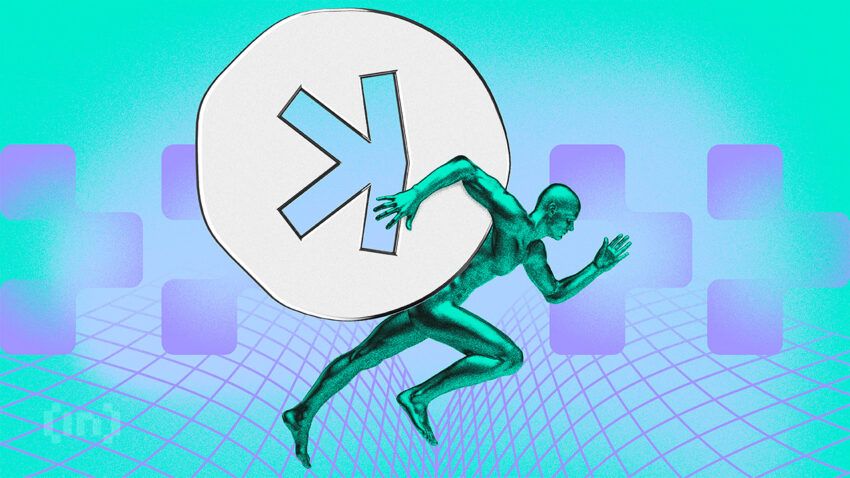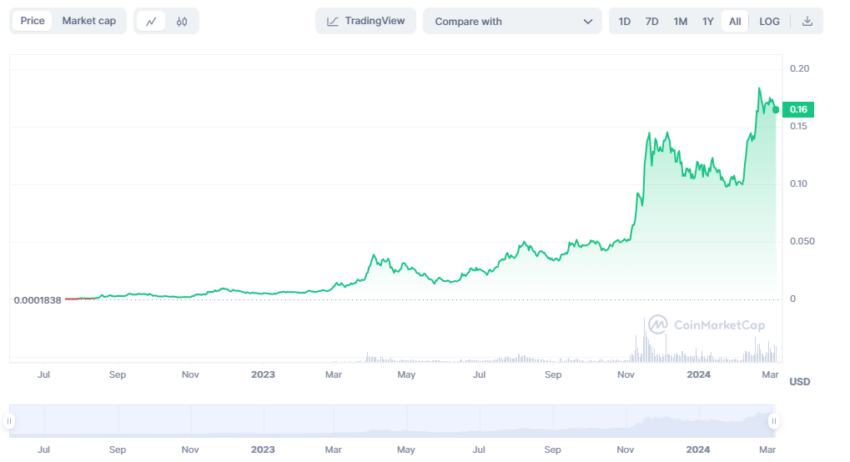Kaspa boldly proclaims itself the fastest and most scalable layer-1 transaction solution, offering instant transaction validation. Kaspa leverages a unique combination of technologies: the GHOSTDAG and PHANTOM protocol, a scalable evolution of Bitcoin’s consensus mechanism. This approach offers the best of both worlds: the speed and scalability often absent in traditional blockchains, coupled with the robust security you expect as a user.
In this guide, we explore all you need to know about Kaspa, including Kaspa — the network; KAS — the crypto, and the PHANTOM/GHOSTAG protocols.
What is Kaspa?
Kaspa’s main mission is to address the persistent challenges affecting the scalability and speed of decentralized transactions. Traditional blockchains usually grapple with network congestion as they expand. Such challenges inevitably result in slower transaction times and increased fees.
Kaspa aims to overcome existing blockchain technology limitations by fundamentally changing how blockchains function. Kaspa has developed a distinctive protocol known as GhostDAG to achieve this goal. Underneath the protocol is a novel algorithm that enables the network to process transactions in parallel rather than sequentially. This approach significantly enhances the blockchain’s capacity and transaction throughput. As a result, it can facilitate instant transactions at a fraction of the cost they would otherwise incur.
Moreover, Kaspa is an open-source project, which means that it is built upon the efforts of a global community of developers. This expansive community maintains, improves, and innovates upon Kaspa’s foundational technology.
Looking into Kaspa’s full range of capabilities

Kaspa has established itself as a comprehensive suite of features to help blockchain networks enhance their usability. One notable capability is reachability, which allows users to query the DAG’s topology.
This provides key insights into the network’s structure and dynamics. Additionally, Kaspa offers block data pruning, a mechanism that optimizes storage requirements while maintaining data integrity.
Kaspa also walks the extra mile by extending support for Simple Payment Verification (SPV) proofs. For those out of the loop, this cryptographic technique enables users to verify the validity of transactions without downloading the entire blockchain.
Meanwhile, the Kaspa team is also actively working on implementing block header pruning, further streamlining the storage needs. Speaking of the team, let’s quickly look at the key players overseeing the Kaspa project.
The team behind Kaspa
Kaspa’s journey began with DAGLabs, a research and development company co-founded by Yonatan Sompolinsky. Despite the eventual dissolution of DAGLabs, the project persevered — thanks to the continued dedication of ex-DAGLabs developers and researchers.
The founding contributors, including Yonatan Sompolinsky, Michael Sutton, Shai Wyborski, Elichai Turkel, Ori Newman, and Mike Zak, have played important roles in shaping Kaspa’s vision and development. Their collective expertise in computer science, distributed systems, cryptography, and blockchain technology has been instrumental in the project’s success.
Kaspa reflects the values of a truly decentralized platform wherein the onus of decision-making lies squarely on an extensive community of developers, researchers, and enthusiasts. Kaspa thrives on transparent, decentralized, and collaborative operations, with no central authority to dictate terms or override the consensus.
How does Kaspa work?
The Highway Analogy is ideal for explaining what Kaspa sets out to achieve and how it accomplishes its objectives.
Blockchain and the Highway Analogy

Think of a highway for data (such as transactions). In the case of traditional blockchains like Bitcoin, that highway has only one toll booth. During rush hours, the road is flooded with vehicles, forcing transactions (cars) to queue up one by one at the toll booth (miner) before proceeding. This bottleneck creates congestion, slowing travel (transaction processing) and driving up tolls (transaction fees).
The PHANTOM and GHOSTDAG protocol
To counter this problem, Kaspa uses a unique approach that combines the speed and scalability of directed acyclic graph (DAG) structures. At its core, Kaspa utilizes two primary protocols: PHANTOM and GHOSTDAG. These protocols aim to tackle the scalability trilemma by offering a solution that doesn’t compromise security or decentralization.
PHANTOM is a proof-of-work protocol that adopts a DAG structure. Unlike a blockchain that operates on a single chain of blocks, a DAG allows for blocks to be added in parallel. This structure significantly increases the network’s throughput as multiple transactions can be processed simultaneously rather than sequentially.
“PHANTOM solves an optimization problem over the blockDAG to distinguish between blocks mined properly by honest nodes and those created by non-cooperating nodes who chose to deviate from the mining protocol. Using this distinction, PHANTOM provides a robust total order on the blockDAG in a way that is eventually agreed upon by all honest nodes.”
– Excerpt from the PHANTOM GHOSTDAG paper (2021) co-authored by Yonatan Sompolinsky
Meanwhile, GHOSTDAG takes the DAG concept further by introducing a method to order these parallel blocks in a way that maintains the network’s security and consensus. It advances beyond the Nakamoto consensus by dynamically calling transactions in a DAG structure. This way, there is ample room to preserve security and consensus even with parallel block additions.
In other words, even though transactions are processed in parallel, the network can still agree on which transactions happened first.
Mechanics and expanding on the Highway Analogy
Essentially, PHANTOM changes the game by introducing a DAG structure. This opens up multiple toll booths on the highway, allowing various cars (transactions) to simultaneously pass through in a parallel setting. Significantly reducing traffic congestion enables multiple transactions to proceed in parallel by opening up several toll booths on the highway.
However, unlike the toll booth, where the exact time of entry or exit might not be crucial, these timestamps are essential for transactions in blockchain networks. The correct sequencing is important to prevent issues like double-spending.
So now, with multiple toll booths operating in parallel, the challenge is to ensure that every car’s movement through the toll network is recorded in an orderly manner. This is where GHOSTDAG steps in.
It acts as an intelligent traffic controller system that dynamically manages the flow of cars (transactions) across all toll booths (miner confirmations). GHOSTDAG ensures that the order of transactions makes sense and maintains the integrity of the entire highway network (blockchain). Even with multiple booths operating simultaneously, GHOSTDAG keeps track of every car’s entry and exit sequence (transaction details).
What makes Kaspa unique?
Here are several key traits:
- Unlike traditional blockchains with a single chain, Kaspa utilizes a BlockDAG (Directed Acyclic Graph). This allows for parallel processing of transactions, significantly increasing scalability and transaction speed.
- Kaspa also implements the GHOSTDAG protocol. This protocol acts as a traffic controller within the BlockDAG, ensuring smooth and secure operation by verifying transactions and maintaining the correct order.
- Unlike other blockchains where only one block is accepted per round, Kaspa utilizes all valid blocks, maximizing efficiency and minimizing wasted processing power.
- Increased processing capacity and competition for limited block space can lead to significantly lower transaction fees than traditional blockchains.
- Kaspa is specifically designed to handle a high volume of transactions. That makes it an ideal choice for widespread adoption.
KAS: Kaspa’s currency
KAS is the native cryptocurrency for the Kaspa protocol. It powers all financial activities in the network, including transaction costs and developer fees.
Kaspa utilizes a blockDAG architecture with high block generation rates. This allows for increased decentralization of KAS mining operations and makes solo mining viable even with lower hash rates.
The project had a fair launch in November 2021, with no pre-mining, pre-sales, or allocation of coins. This was done to ensure that everything is completely decentralized, open-source, and community-driven right from the start.
KAS halving and emission rate
Like Bitcoin (BTC), Kaspa has a fixed maximum supply and follows a halving schedule. It has a predetermined maximum supply of 28.7 billion KAS. This finite limit aims to prevent inflation and maintain the value of KAS over time.
Kaspa employs a halving schedule for its emission rate. This means the rate at which new coins are created reduces by half yearly (as opposed to Bitcoin’s halving every four years). However, unlike traditional halving events that happen in a single instance, Kaspa implements this through a gradual monthly reduction.
Here’s how it works:
- The initial emission rate starts at a specific value.
- Each month, the emission rate is multiplied by a factor of (1/2)^(1/12), essentially the square root of one-half.
- This gradual decrease continues over a period of 12 months, effectively achieving a 50% reduction in the annual emission rate.
Initially, mining was performed exclusively on CPUs for the first month after the mainnet launch. By early December 2021, a community member released the first open-source GPU mining software for Kaspa. GPUs and later FPGAs remained the primary mining hardware for around one and a half years.
And then, on April 13, 2023, a representative from IceRiver joined the official Discord to unveil their lineup of ASIC miners for the project. Thus began the era of ASIC mining for Kaspa.

Kaspa wallet
The Kaspa ecosystem has a range of wallets that are generally applauded for stringent security and user-friendliness. These wallets leverage the Bitcore network and deploy multiple security layers, such as multi-sign capability. Depending on your specific requirements and preferences, you can choose one of the following Kaspa wallets.
- Web wallet: Kaspa Web Wallet is powered by PWA (Progressive Web App) technology. It features a user-friendly interface and is convenient for users who value accessibility. It can be accessed from any device with a web browser. The Web Wallet has good security measures, although some users might prefer a dedicated desktop or hardware wallet for enhanced security or offline capabilities.
- Desktop wallet: The KDX process manager streamlines the installation and configuration of the Kaspa full-node software and the accompanying desktop wallet. It provides a hassle-free experience for users operating in a desktop environment.
- Command Line Wallet: The Command Line Wallet is maintained by the core Kaspa team. It is an integral part of the core node software bundle and offers advanced users a powerful command-line interface.
- Hardware wallet integration: KasVault is a user-friendly interface for sending and receiving Kaspa transactions using hardware wallets. Currently, it supports integration with Ledger wallets.
Lessons from Kaspa
Kaspa presents a novel approach to tackling the blockchain trilemma. It combines the well-established proof-of-work consensus mechanism with a unique BlockDAG structure and GHOSTDAG protocol. This combination addresses scalability challenges often faced by traditional blockchains, potentially paving the way for faster and more efficient transactions.
At the same time, KAS, Kaspa’s native cryptocurrency, boasts strong tokenomics and a respectable history. It holds promise, yet investing in it requires a clear understanding of the risks inherent in cryptocurrency investments. Given the significant impact of market volatility and price fluctuations, it is important only to invest what you can afford to lose.
Frequently asked questions
Kaspa (KAS) crypto is the native asset in the broader Kaspa ecosystem. Like Bitcoin (BTC), Kaspa has a fixed maximum supply and undergoes halving. It has a predetermined maximum supply of 28.7 billion KAS. This finite limit aims to prevent inflation and maintain the value of KAS over time.
The total Kaspą (KAS) supply is capped at 28.7 billion coins. This predetermined cap ensures predictability and scarcity, potentially mitigating inflation over time. The emission rate gradually reduces through a unique monthly adjustment mechanism, aiming for a 50% reduction every year.
It is impossible to predict the future price of any cryptocurrency, not just Kaspa. We can expect a trend in the long run depending on the merits and potential of a project, but no prediction will be 100% true at all times. So, it is difficult to predict if KAS will hit $10 anytime soon (or ever, for that matter).
Trusted
Disclaimer
In line with the Trust Project guidelines, the educational content on this website is offered in good faith and for general information purposes only. BeInCrypto prioritizes providing high-quality information, taking the time to research and create informative content for readers. While partners may reward the company with commissions for placements in articles, these commissions do not influence the unbiased, honest, and helpful content creation process. Any action taken by the reader based on this information is strictly at their own risk. Please note that our Terms and Conditions, Privacy Policy, and Disclaimers have been updated.




